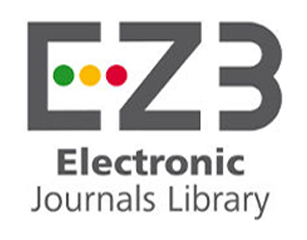THE ROLE OF DIGITAL MEDIA AND SOCIAL NETWORKS IN ELECTION CAMPAIGNS
DOI:
https://doi.org/10.32689/2617-2224-2023-2(35)-2Keywords:
Digital media, social networks, election companies, cyber security, digitalizationAbstract
The last decade has been marked by the rapid spread of the Internet, social networks and digital technologies. This radically transformed the communication process of modern election campaigns. In the digital era, electoral political campaigns are not only a decision of voters, but also a tool of active communication, which determines the formation of public opinion and the support of political forces. Digital technologies are changing and improving campaigning and communication methods, empowering political campaigns to achieve their goals. At the same time, political companies use social networks for all segments of the population for greater coverage. One of the key advantages of digital technologies is the possibility of direct communication with voters through social networks, electronic platforms and other digital channels. Politicians can quickly and effectively communicate with audiences, present their views and answer questions, giving voters more opportunities for interaction and information. For greater coverage of voters, all popular social networks are used, each social network corresponds to a certain age category of society. If previously the key role was played by traditional mass media – television, radio, newspapers, now more and more attention is being transferred to the online space. Social networks are becoming the main platform for political advertising, message promotion, discussions and polemics. This means that the value of social media transparency is passed on to candidates. After all, they know how to speak to voters in their own words and on their own terms. It is worth paying attention to the large coverage of social networks compared to the main sources. With television audiences shrinking, social media is the biggest show in town for politicians. The use of analytical tools allows political campaigns to accurately define target groups of voters and adapt their messages to the specific needs and interests of the audience. This helps to personalize communication and increase the effectiveness of influence. The organization of virtual debates, the broadcasting of events in real time and the use of interactive formats make it possible to attract the attention of the public and create a fruitful field for the discussion of important issues. On the other hand, digital technologies also carry certain risks. In particular, the possibility of the spread of fake information, cyber attacks and breaches of cyber security can affect the integrity and effectiveness of election processes. Therefore, it is important to develop effective mechanisms to protect and control the use of digital tools in political campaigns.
References
Гоцур О. Соціальні мережі і політичний pr в українських та закордонних виборчих кампаніях. Вісник Національного університету «Львівська політехніка»: журналістика. № 2 (2), 2021. с. 53–57
Данько Ю. Соціальні мережі як засіб політичної комунікації. European political and law discourse. Vol. 2. Is. 2. 2015. С. 204–209
Каліна І.І., Хайдарова Т.М., Сабірова І.М. Механізм впливу цифрової маркетингової комунікації на споживача в умовах військового стану країни. МАУП. Економічні науки. 2023. Вип. 3 (70). Київ : Міжрегіональна Академія управління персоналом, 2023. С. 52–57. DOI: https://doi.org/10.32689/2523-4536/70-8
Майстренко К. М. Сучасні механізми протидії політичній корупції: зарубіжний досвід. Інвестиції: практика та досвід. № 9/2023. С. 133–137. DOI: 10.32702/2306-6814.2023.9.133
Смола Л. Є. Перспективи соціальних мереж в контексті розвитку комунікаційних технологій. Вісник Львівського університету. Серія філософсько політологічні студії. 2015. № 7. С. 243–249.
Швець К. та Чальцева О. Digital PR-технології у передвиборчих президентських кампаніях США та Франції 2016–2017 рр. Вісник студентського наукового товариства Донецького національного університету імені Василя Стуса. Вінниця, 2019. Вип. 11. Т. 1. С. 28–32.
Andersson, R., Heide, M., Simonsson, C. Digital corporate communication and internal communication. Handbook on Digital Corporate Communication, (2023). P. 18–33. URL: https://www.e-elgar.com/shop/gbp/handbook-on-digital-corporate-communication-9781802201956.html
Badham M., Luoma-aho V., Valentini C.А. Revised digital media–arena framework guiding strategic communication in digital environments. Journal of Communication Management. 2023. DOI: 10.1108/JCOM-03-2023-0031
Kalina I., Shulyar N. Strategy for the development of digital technologies for business processes at an enterprise in/under conditions of economic uncertainty: monograph. K. : ДКС-Центр, (2023). P. 168.
Gallup. URL: https://www.gallup.com/home.aspx
Rew Research Center. URL: https://www.pewresearch.org.
Shmalenko I., Yeftieni N., Semenets-Orlova I. Impact of social media influencers on public policy and political discourse. In International Conference on Social Science, Psychology and Legal Regulation (SPL 2021). 2021, December. P. 88–93. Atlantis Press.
Semenets-Orlova I.A., Kyselova Y.Y. Multidimensional management contemporary: generation of social meanings for a new collective identities. Публічне урядування. 2018. № 4. Р. 264–273.
Klochko A., Semenets-Orlova I. Ensuring Information Security of Ukraine in Conditions of Modern Development of Society. Edukacja Ekonomistów i Menedżerów. 2022. № 65 (3).











